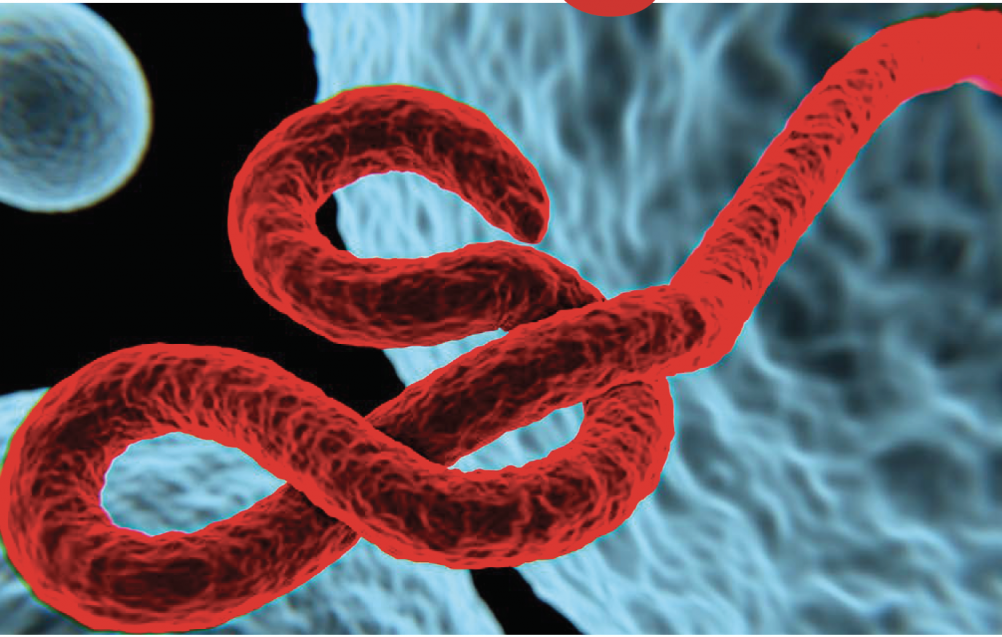Delving Deeper into Post Ebola Syndrome
Here is a look at the patterns within the variety of symptoms and presentations during physician exams.

As the name suggests, Post-Ebola Syndrome happens to survivors of the infectious disease and it can come in a wide range of lingering symptoms including eye problems up to blindness, neurological issues, as well as muscular and joint pain.
It can be quite debilitating to the point of people suffering from this syndrome who are unable to work.
As such, investigators decided to understand the depth of the syndrome. They identified survivors in East Sierra Leone, and household contacts of survivors were identified by enrolled survivors. Both groups were administered a questionnaire assessing self-reported symptoms. Providers performed a physical exam.
For nearly 3 years from March 2016 and January 2019, 375 Ebola survivors and 1040 contacts were enrolled.
"Symptoms were then compared using hierarchical clustering,” the investigators wrote. "Statistical analysis of the correlations between clusters was conducted using conditional logistic regression. Both SPICE and principal component (PCA) analyses were performed to explore the relationships between symptom clusters.”
In terms of symptom clusters, 6 were identified representing organ systems.
The SPICE analysis revealed 2 general phenotypes: with or without rheumatologic symptoms.
“Clusters including rheumatologic symptoms were correlated with one another (r = 0.63) but not with other clusters (r < 0.35). Ophthalmologic/auditory symptoms were moderately correlated with the non-rheumatologic clusters (r > 0.5)," the investigators wrote. "Interestingly, psychologic/neurologic, cardiac/GI and constitutional clusters correlated with one another (r > 0.6) p < 0.0001 in all cases. “A PCA was performed which showed three groups by K means clustering. The symptom clusters developed through hierarchical clustering were then mapped onto the PCA, showing that the groups represented relatively asymptomatic survivors, those with musculoskeletal complaints, and symptomatic survivors without musculoskeletal complaints. Those with musculoskeletal complaints separated along PC2, the major contributors to which were joint tenderness and decreased range of motion.”
This study, “Post-ebola Syndrome Presents with Multiple Overlapping Symptom Clusters: Evidence from an Ongoing Cohort Study in Eastern Sierra Leone," was presented as an oral abstract at IDWeek 2020.
Sarah Talia Himmelfarb, MD, resident in Internal Medicine and Pediatrics at Tulane University is a presenting author of the study and spoke to Contagion® during IDWeek 2020 about the study and offered significant insights into its important findings.
What was your motivation for doing this study?
To date, several studies have been performed to determine if specific markers of inflammation are associated with Post-Ebola Syndrome. No marker has been identified when looking at survivors as a homogeneous group. The goal of the study was to look for patterns within the wide variety of symptoms that Ebola survivors present with. Our motivation in doing this was to see if any patterns fit known disease processes. In particular, we wanted to investigate the possibility that they fit the pattern of a rheumatologic or autoimmune disease. This would help us better understand this poorly characterized syndrome and might help lead to therapies for those who suffer from it..
What are the important takeaways from it?
Using multiple modalities of statistical analysis of reported symptoms and physical exam findings we found clusters of symptoms that occur together. We also found a group of patients that has complaints from the musculoskeletal cluster of symptoms such as joint pain and decreased range of motion, and this group overlaps with a group that has gastroenterological symptoms such as abdominal tenderness.
This suggests that there is a group of survivors which seem to have a rheumatologic pattern of disease, and that this may be related to GI dysfunction in some way. An intriguing possibility is that inflammation stemming from impaired gut barrier, as was detected in a previous study, may be an etiologic cause of this group of symptoms.
Do you have any plans for follow-up?
Our next steps will be to try to correlate different symptom patterns with serum and plasma biomarkers and antibody phenotypes. We also hope to explore how these symptom patterns vary over time and with relationship to demographic features such as socioeconomic status and profession.
Why is this an important topic?
This work has significance for the thousands of Ebola survivors who emerged from the 2014-2016 epidemic in Western Africa. It also contributes a small but growing body of knowledge of post-viral sequelae. This field has only become more relevant in the age of COVID-19.
